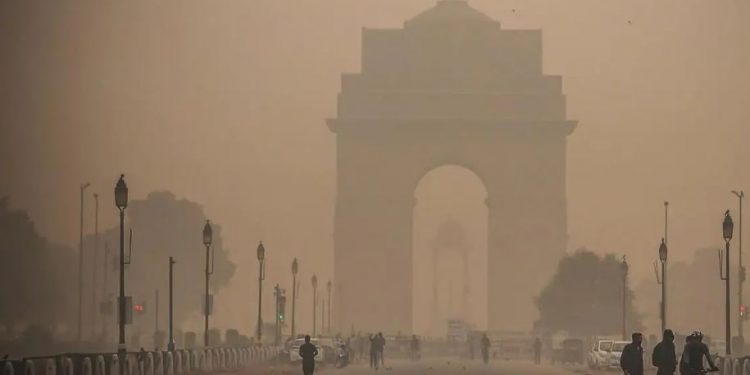New Delhi: Delhi’s air quality plummeted to the “severe plus” category Friday morning, a stage at which all emergency measures, including a ban on polluting trucks, commercial four-wheelers, and all types of construction, are mandated to be initiated and enforced in the National Capital Region.
These measures constitute the final stage of the Centre’s air pollution control plan and should ideally be activated at least three days prior to the Air Quality Index surpassing the 450 mark in the capital, as outlined in a policy document prepared by the Commission for Air Quality Management (CAQM).
The CAQM, a statutory body responsible for devising strategies to combat pollution in the region, on Thursday, ordered a ban on non-essential construction work and specific categories of polluting vehicles but has yet to call upon Delhi and NCR states to implement all the emergency measures.
The Delhi government has also announced the closure of all primary schools for two days in an effort to safeguard young children from health-threatening pollution.
The city’s AQI skyrocketed from 351 at 10 am Thursday to 471 at 9 am Friday, reflecting a sudden increase in pollution levels due to highly unfavourable meteorological conditions and a sharp spike in stubble-burning incidents in neighbouring states.
The city’s 24-hour average AQI, recorded at 4 pm each day, was 392 Thursday, 364 Wednesday, 359 Tuesday, 347 Monday, 325 Sunday, 304 Saturday, and 261 Friday.
These numbers indicate a gradual deterioration in Delhi’s air quality over the last few days, culminating in a descent into the severe category Thursday.
The air crisis is not confined to Delhi alone; several cities in neighbouring Haryana, Rajasthan, and Uttar Pradesh have also reported hazardous air quality.
These cities include Hanumangarh (401), Bhiwadi (379), and Sri Ganganagar (390) in Rajasthan; Hisar (454), Fatehabad (410), Jind (456), Rohtak (427), Ballabgarh (390), Bahadurgarh (377), Sonepat (458), Kurukshetra (333), Karnal (345), Kaithal (369), Bhiwani (365), Faridabad (448), and Gurugram (366) in Haryana; and Ghaziabad (414), Baghpat (425), Meerut (375), Noida (436), and Greater Noida (478) in Uttar Pradesh.
As a dense and pungent haze lingers over Delhi-NCR for the fourth consecutive day Friday, the concentration of PM2.5, fine particulate matter capable of penetrating deep into the respiratory system and triggering health problems, exceeded the safe limit of 60 micrograms per cubic metre by seven to eight times at multiple locations throughout the region.
According to a numerical model-based system developed by the Indian Institute of Tropical Meteorology in Pune, smoke from stubble burning accounted for 25 per cent of the PM2.5 pollution in Delhi Thursday, and this figure may rise to 35 per cent Friday.






































